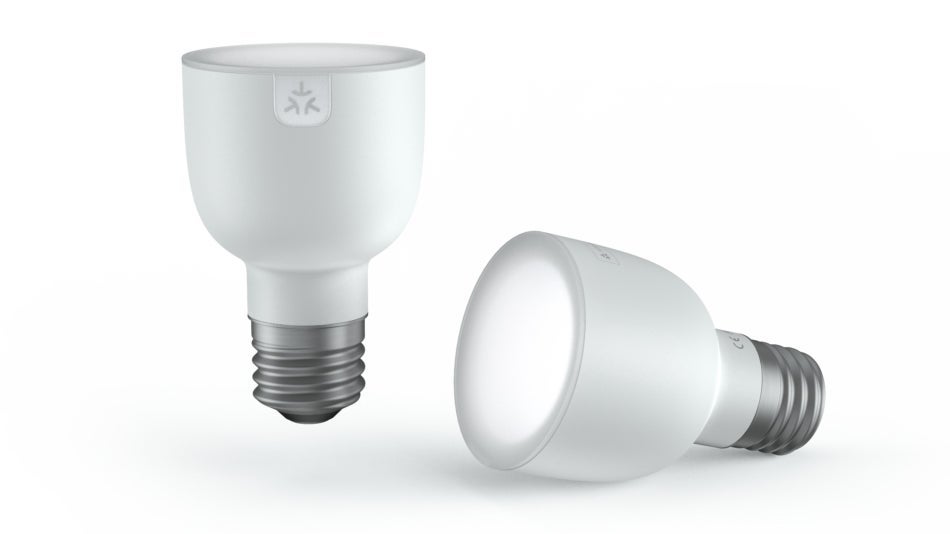Amazon is hosting its annual Alexa developers annual conference, called Alexa Live, today. The event will introduce a heaping of new APIs for developers to build with, meaning new abilities coming to an Echo speaker or smart display near you. Many of the tools being introduced are there to drive the idea of Amazon’s Alexa Ambient Home. Some of what the company announced will also make it easier for brands to infiltrate your home through your digital assistant.
At least Amazon said something about Matter. The company announced new initiatives to help prepare its digital assistant for the Matter standard, which we’re still expecting to launch sometime this year. Despite its severe delay, Amazon is still using Matter as a selling point for its digital assistant, since the promise of a fully interoperable smart home is still the dream — at least for those of us still tinkering with it.
If you’ve got Amazon’s Alexa in your smart home, here are some highlights from Alexa Live.
The Alexa Ambient Home
To kick things off, Amazon announced the Alexa Ambient Home Dev Kit, a collection of five APIs meant to make the Alexa-based smart home experience feel more unified across the board.
First up, the dev kit includes the Home State API, which can read different “states” of your smart home, like knowing when you’re at home, on vacation, enjoying dinner with your housemates, or taking a nap. You could use these different modes to help Alexa understand what state the smart home should be in during these particular moments. For instance, you might theoretically set up Alexa and any security apps prone to alerting you to snooze during your napping hours.
Speaking of security, Alexa is getting a feature that’s already baked into many DIY security kits. The new Safety & Security APIs will extend Alexa Guard’s usefulness by adding sound alerts to Echo devices. That means your microphone-equipped Echo Show 15 or smart speaker can listen in for smoke and CO2 alarms and let you know when they’re blaring at home.
For smart homes with many rooms and people, the Device & Group Organisation API will automatically sync device and group names between Alexa and third-party apps. You will no longer have to worry about setting up different configurations between apps. It’ll be interesting to see how this is implemented, as apps like Philips Hue can be annoying to manage because they treats rooms differently than your digital assistant.
The last two APIs of this development kit seem specifically catered to prepping Alexa for its eventual Matter future. Matter’s inherent “log on and it works” nature fits in squarely with Amazon’s vision for the ambient smart home. The first Matter-related API is called Credentials and allows you to set up new devices without repeatedly inputting your network name and password. Instead, it’ll rely on one centralised piece of hardware connected to the network to take care of the handshake. The second one is referenced as Multi-Admin Simple Setup, allowing you to set up a third-party app to manage smart devices using Amazon’s cloud-based services.
All-in on Matter

In addition to the Alexa Ambient Dev Kit, Amazon is introducing additional APIs in preparation for the eventual launch of Matter later this year.
The Alexa Connect Kit SDK for Matter is a new software package that includes the ACK SDK, or Alexa Connect Kit. The ACK SDK features all the code for logging on plugs, lightbulbs, and everything else. This particular Alexa Connect Kit SDK expands on ACK to add cloud connectivity, over-the-air updates for device management, and logs and metrics for device controllers. The Alexa Connect Kit SDK will have support for Matter over WiFi.
Amazon is also expanding retailer support for its Frustration-Free Setup so that more companies can slap this terminology onto their marketing efforts. It means the prompts that connect your smart stuff to the network are easy to follow and short enough that it feels like all you did to set up the device was plug it in and turn it on. And to Matter’s credit, the point of the technology is to make this possible by simply logging a device onto WiFi, so here’s to hoping it’s implemented as such when the standard goes live.
More digital assistants
Alexa doesn’t mind sharing the spotlight. Amazon announced new abilities for its partners that could result in you commanding more than one digital assistant.
Universal Device Commands (UDCs) will allow you to interact with multiple voice services on the same device. It’s already in effect on some Sonos and Pioneer devices. Amazon announced new partnerships, too, including Skullcandy, which makes headphones and earbuds. You’ll be able to say “Hey Skullcandy” to carry out commands like skipping through songs and answering phone calls. You’ll be able to simultaneously call on Alexa for all of its usual offerings, like sports scores and the weather.
Amazon also built an ability called Agent Transfers (ATs), allowing two digital assistants to piggyback off one another. For instance, if Skullcandy can’t answer your query, it’ll toss it off to Alexa to take care of the execution.
These two new features are based on the Voice Interoperability Initiative (VII), which Amazon launched in 2019. It currently includes 90 members, and it’ll be interesting to see which brands come out with their own version of a voice assistant — and how they’ll be received by folks who are already a little miffed with their singular voice assistant.
Alexa on more platforms
One of the other major announcements of Alexa Live includes the general availability of the Alexa Voice Service (VS) SDK 3.0 for more devices. Third-party smart TVs and smart displays will be able to integrate some of the digital assistant’s newer features previously available only to first-party hardware, like Alexa-to-Alexa video calling and support for streaming security camera footage.
Prepare for promotions
Here’s the part where we get to the features categorised under “business growth.” We’re picking out some of the more compelling bits of the news, but you can read the whole thing over at the Alexa Live developer blog.
You may have noticed your Echo Show teeming with suggestions on what to buy or read next. Imagine that part of the screen getting more chatty if developers take advantage of some of Amazon’s new APIs. One of them is called Promoted Skills, which will allow developers to set up promotional campaigns for any new skill. Details are slim on how the promotions would work, but considering how the Echo Show displays suggestions now, it’s not far off to think that’s how they’d be advertised.
Developers are also encouraged to check out pre-built Routines — honestly, I wouldn’t mind this, because sometimes I have no idea where to start automating my smart home. You’ll be able to provide consent before any Routines are set. The feature is currently available as a developer preview, which means it’s likely going live soon enough.
Since Amazon is a massive online retailer, it makes sense that it would also bundle in the Alexa Shopping Kit. This consists of several features that allow developers to embed “shopping experiences” within their skills. The idea is to help you shop on Amazon using your voice without having to interface with an app or browser. It’s not like Alexa devices aren’t already capable of this, but this one lets companies and sellers make more customised voice experiences.
Welcome to Alexa Ambient Home
Here’s what Amazon means when it refers to the Alexa Ambient Home. From its blog:
We believe that the future of the smart home is one that bridges and highlights the value of a non-homogeneous array of devices and services from many different companies and brands, all working together for the customer’s benefit.
Amazon’s SVP of Devices & Services, Dave Limp, admitted the company is still years away from making its “vision of the ambient home a reality.” But equipping its developers with the tools necessary to carry out this unrealized vision is helping promote a trend already resonating within the industry. Even Google made similar declarations about ambient computing at its developer conference earlier this year, and it’s very clearly using the smart home as one of its entry points.
What will Alexa Ambient be like in the smart home? Will it be helpful and suggestive when I walk through the door about which lights to turn on and how high to set the temperature? Or will it be another vessel for Amazon to constantly hounds me to buy stuff from its online store? Hopefully, the choice is ours to make.
